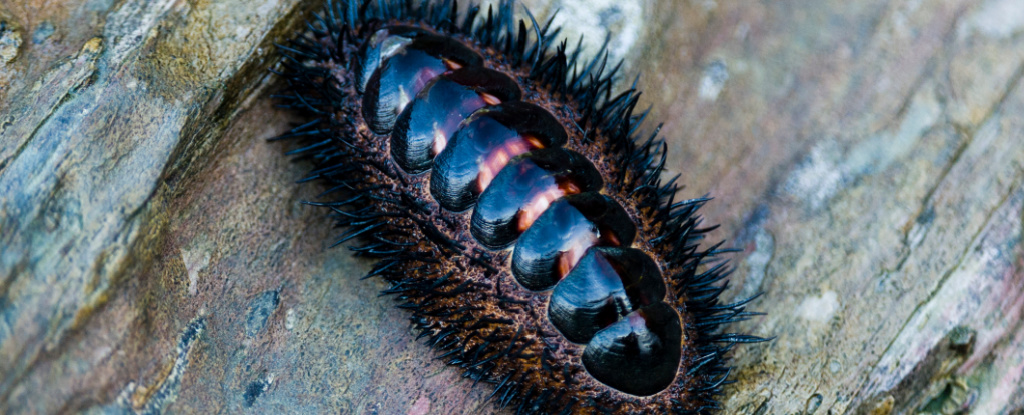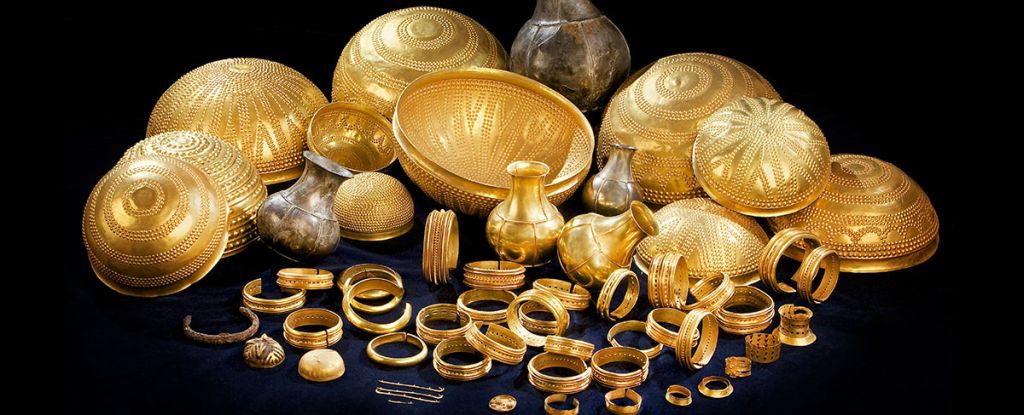Small, shelled, and unassuming, chitons have eyes unlike any other creature in the animal kingdom.
Some of these marine mollusks have thousands of bulbous little peepers embedded in their segmented shells, all with lenses made of a mineral called aragonite. Although tiny and primitive, these sensory organs called ocelli are thought to be capable of true vision, distinguishing shapes as well as light.
Other chiton species, however, sport smaller ‘eyespots’ that function more like individual pixels, much like the components of an insect’s or mantis shrimp’s compound eye, forming a visual sensor distributed over the chiton’s shell.
A new study examining how those different visual systems came to be has now revealed a surprising evolutionary nimbleness to these rock-dwelling creatures: their ancestors hastily evolved eyes on four different occasions, resulting in two very distinct kinds of visual system today.
Although not quite as repetitive as crabs and their side-walking body plans, which have evolved at least five times, the study shows once again how evolution throws up multiple solutions to basic problems, like how to use light to avoid becoming lunch.
“We went in knowing there were two types of eyes, so we were not expecting four independent origins,” says evolutionary biologist and lead author of the study, Rebecca Varney from the University of California Santa Barbara. “The fact that chitons evolved eyes four times, in two different ways, is pretty amazing to me.”
To reconstruct this evolutionary history, the researchers compared fossils and analyzed DNA samples taken from specimens preserved at the Santa Barbara Museum of Natural History to piece together the chiton evolutionary tree.
The two visual systems evolved twice each and in quick succession, the analysis showed. Strangely, though, the groups that arrived at similar visual structures weren’t the ones most closely related to each other; they were distant relatives, separated by millions of years.
Eyespots evolved in one group of chitons as early as 260 to 200 million years ago during the Triassic, when dinosaurs first emerged, just edging out the first shell eyes which another group evolved in the Jurassic some 200 to 150 million years ago.
Then, shell eyes evolved a second time between 150 to 100 million years ago, during the Cretaceous, in Toniciinae and Acanthopleurinae chitons, making them the most recent lensed eye to emerge, that we know of.
Lastly, eyespots evolved again in a different branch of the chiton evolutionary tree as late as the Paleogene, around 75 to 25 million years ago.

After piecing together a timeline, Varney and colleagues were still curious about the potential conditions that guided this repetitive evolution.
Chitons have openings in their shell plates through which the optic nerves pass; it turns out that the species with fewer slits tended to evolve fewer, more complex shell eyes. On the other hand, chitons with more slits went on to develop more numerous, simpler eyespots.
“Clarifying the role of [trait] history in shaping evolutionary outcomes is critical to our understanding of how and why characters can evolve in predictable ways,” the researchers conclude.
As to how these structures feed visual information to the chiton brain, that’s the focus of ongoing research.
What we know so far, from another recent study, is that in at least one chiton species, the more complex shell eyes send visual information for processing in a ring-shaped neural structure that goes around their whole body. Optic nerves connected to this ring then sense the location of an object based on which parts of the ring are activated.
The study has been published in Science.





